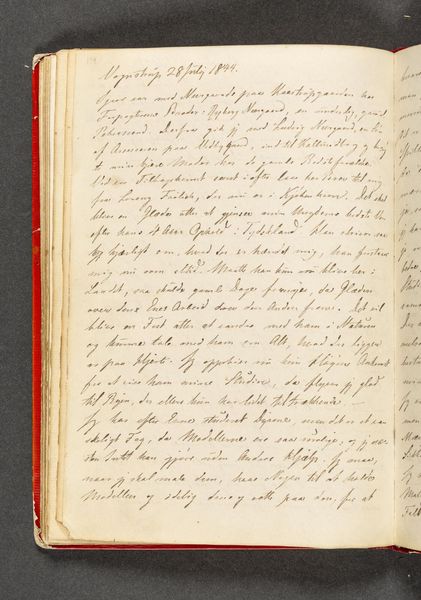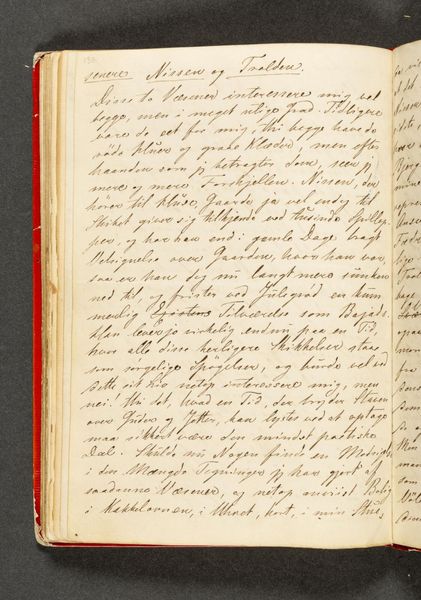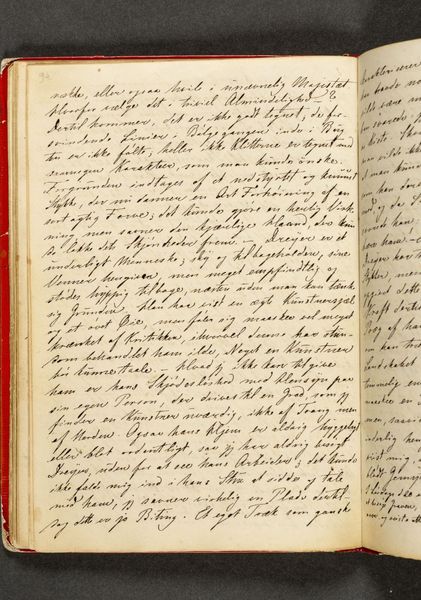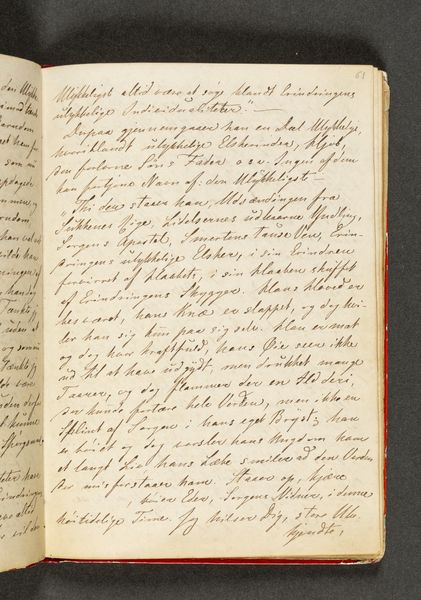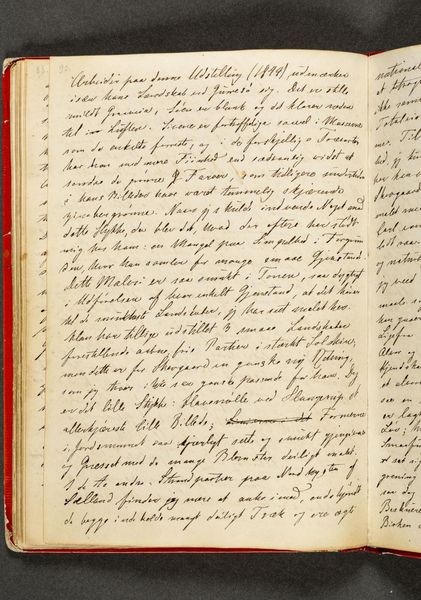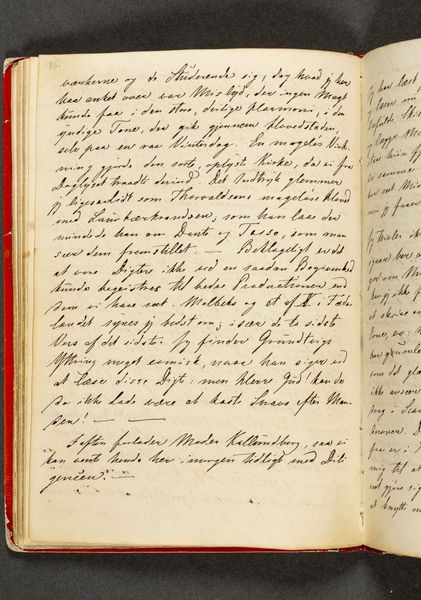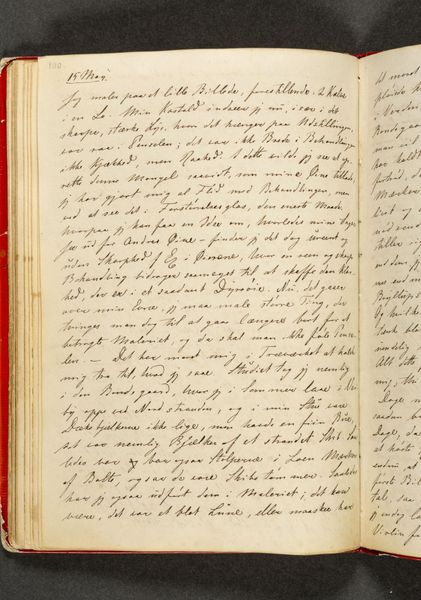
drawing, textile, paper, ink, pen
#
drawing
#
textile
#
paper
#
ink
#
romanticism
#
pen
Dimensions: 192 mm (height) x 133 mm (width) (bladmaal)
Curator: Here we have "Dagbog. Side 136", or "Diary. Page 136," a work created by Johan Thomas Lundbye in 1844. The piece, housed at the SMK – Statens Museum for Kunst, features ink on paper and textile. Editor: The neat columns of cursive give me an immediate sense of introspection and restraint. The color palette seems quite muted. It resembles a well-kept, leather-bound ledger. Curator: Diaries held immense cultural significance during the Romantic era. Lundbye and his contemporaries frequently used them as spaces to record daily life but also explore subjective emotions, thoughts about national identity, and, significantly, to reflect artistic concerns. They served as both personal archives and tools for self-fashioning within a particular social milieu. Editor: Note the rhythm in the strokes of the handwriting. Each mark seems controlled, yet they accumulate in a wave across the page. The dark ink set against the soft paper really underscores this push and pull, doesn't it? A play of discipline and spontaneous expression. Curator: Lundbye, during this period, was actively involved in discussions about Danish national identity. His diary entries are peppered with reflections on folklore, landscapes, and cultural heritage—all vital elements being considered to build national solidarity. In effect, even this most personal space becomes charged with a national project. Editor: But let’s not overlook how materiality itself is at play. The paper acts like a veil through which Lundbye communicates indirectly to himself and perhaps posterity. The red binding introduces an implied frame for thoughts penned within, underscoring its incompleteness. Curator: The very act of meticulously archiving feelings and thoughts highlights a sense of duty that upper-middle-class men of the time held towards posterity. Lundbye perhaps perceived himself writing to an imagined future audience and that changes our sense of the work entirely. Editor: It seems the composition of personal thoughts carefully penned into a tangible object shows how even the most ephemeral thought can achieve structure and permanence. It all resides within this deceptively humble container.
Comments
No comments
Be the first to comment and join the conversation on the ultimate creative platform.

